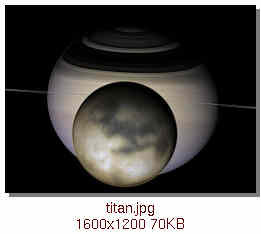granthutchison wrote:t00fri wrote:If we did not
cultivate this amazing amount of "inertia" around
here, it would long have been time to contemplate a
concrete "multi-wavelength" approach to vision within
Celestia!
I don't imagine you think I'm helping to cultivate the
inertia, although it could be read that way.
Definitely NOT, Grant. I can perfectly see your point!
Actually, I think in the past the two of us (along with
Chris, of course) have been
perfectly unanimousin vigorously defending Celestia's basic design
philosophy of trying to model things as realistically as
possible!
Let me just point out a little subtlety here: I am --like
you-- clearly in favor of marking LOK boundaries on
textures, for example. In these cases
all our
knowledge just ENDS at the boundary! But as to the
wavelength issue, things are slightly different. You seem
to adhere to the credo that we should refer to visible
light all the time. For me this is a rather artificial
limitation, since there are so many highly
valuable/instructive data in other wavelength bands. So
no LOK situation whatsoever!
Grant wrote:
1) I'm all for a multiwavelength approach, though I'm not
sure how it could be implemented well, and I
haven't really seen any concrete suggestions as to which
wavebands would be selected and where we would
obtain these data uniformly across all objects. The
concept at present seems to involve too much
handwaving for me to become actively engaged with it.
As I pointed out repeatedly, here is the point where we
have to make up our mind. In order to achieve real
progress with such a more challenging task, we
inevitably have to merge all our diverse know how and
DISCUSS actively. One 2 line post in one or two weeks
in the developer's list (as happens since quite some
time), will certainly be insufficient here...

Grant wrote:2) Given that we don't as yet have a
multiwavelength Celestia, and we do at present try
very hard to show people what they would really see
with their own eyes, it seems to me that for the sake of
consistency we shouldn't have transparent Titan clouds.
If we're viewing Titan in IR, why is Saturn in the
background in visible wavelengths?
OK, we obviously are not ready yet to display a fully
consistent picture.
But we do have beautiful pictures of Saturn in IR light
and there are many more to come. So a simple IR switch
could display BOTH Saturn and Titan in IR. Phantastic! All
we got to solve really, is what is to happen, if there are
no respective data available for an object....
Grant wrote:Some feedback on your texture bundle:
1) I very much like the Titan cloud and atmosphere
colours. The current Celestia texture appears to be
way too red, and this seems to be because it's
effectively false colour - prepared from Voyager orange,
blue and violet filters. The blueness of the high haze
seen in Voyager views is probably really present, but
again we're seeing a colour emphasis that isn't confirmed
by the recent "true colour" Cassini image.
2) There are some dark bluish patches on the right side
of your cloud texture that seem a little odd to me -
certainly those at the top and bottom edge are creating
wedge-shaped artefacts at the poles.
For the same reason I left out the blue upper
atmosphere color as suggested from Voyager and
apparently not visible recently.
Did you really download my most recent clouds
addendum?? The dark patches on the rhs of the haze
texture are gone, there is an opaque clouds texture
specially for you

and the haze color is virtually
in /perfect/ agreement with the true-color Cassini photo.
Grant wrote:3) I know the atmosphere height of 200km looks a little
odd, but I think this is just because we're not used to
looking at a small low-gravity body with a dense
atmosphere - I'd be keen to use that setting in Celestia.
4) The Voyager data put Titan's tropopause at around
40km, and the temperature minimum in that region
suggests that's where the densest clouds would form.
I've currently used 40 as the CloudHeight in my own
setup - but do you have other information that would
suggest a different altitude?
I have put 70 km in my most recent 'titan-clouds.ssc' in
the clouds-addendum package for the simple reason that
200 km looks a little strange under some angles. But this
is due to a Celestia artifact. I have emphasized however
a few posts higher up that one should really take 200
km! So we agree here.
I put tentatively 3 km as the CloudHeight which I took
from a recent ESA caption. But no, there is no solid info,
I think.
Bye Fridger
